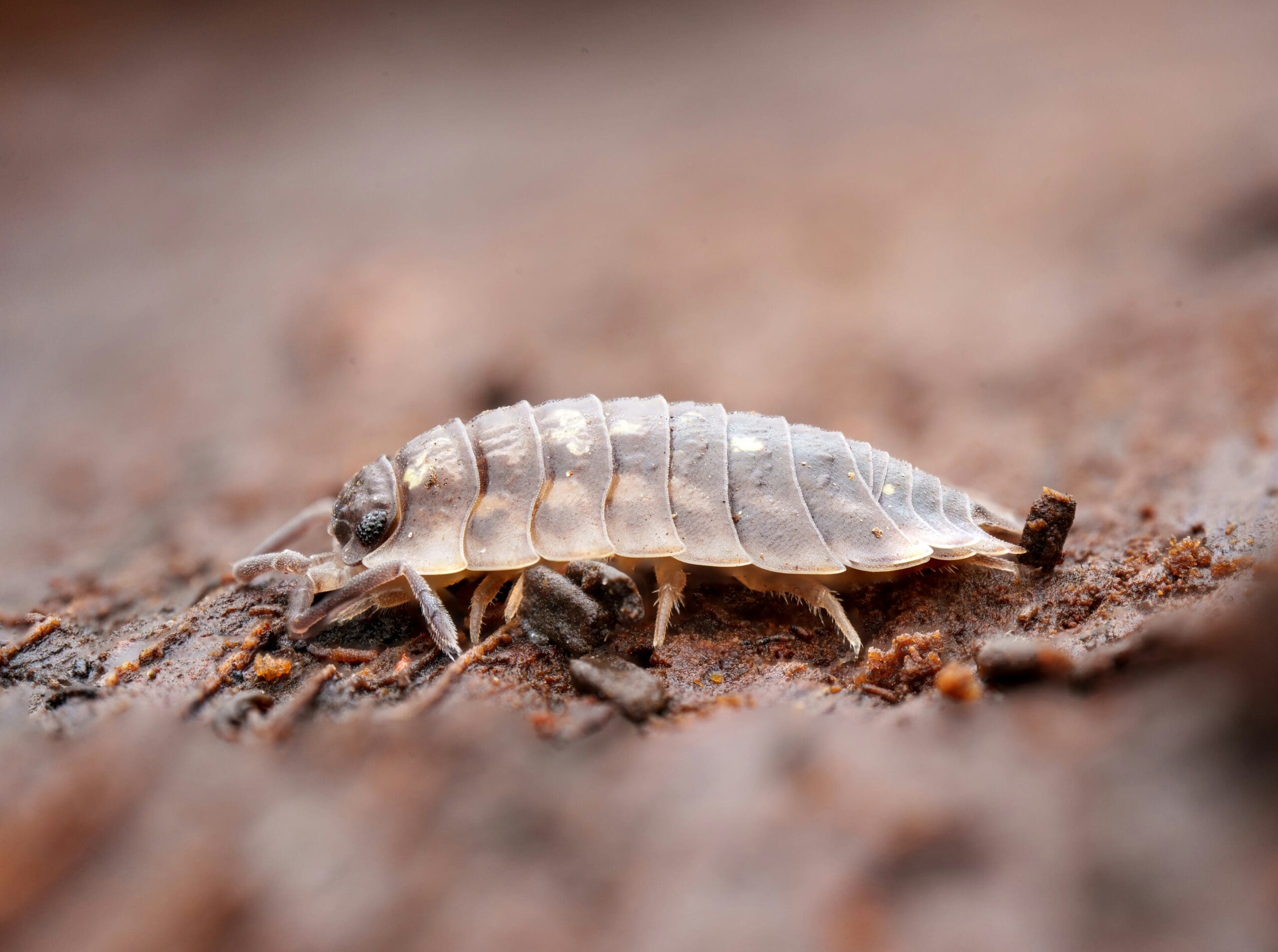How to Get Rid of Woodlice in the House

Estimated reading time 6 minutes
The appearance of any pest in the home is largely unwelcome. Rats, mice, bedbugs and woodlice can all make a household feel less homely. In some cases, their presence can slow or halt a property sale. In other instances, a sale may still be possible, but perhaps only once you’ve tackled the issue or reduced your asking price significantly. As we’ve mentioned previously, you must declare whether you’ve had a vermin infestation at the property when you sell it, even if the problem has since been solved.
In this blog, we look at woodlice, how to remove them, and how doing so not only protects your property but also helps you secure a quicker sale.
What are woodlice?
We’ll start with a simple question that may have a surprising answer. Woodlice are not insects. They are crustaceans, just like crabs and lobsters. With seven pairs of legs and two antennae, they are quite distinguishable. You may not see many of them during the day, as they are nocturnal. However, in the right environment, it is quite possible to spot them at any time.
Why are woodlice in my home?
Woodlice will typically enter a home if the environment suits them. They find areas that are dark, damp and provide ample opportunities for food. Because they feast on decaying leaves, rotting wood and animal droppings, they will, for the most part, stay outside. However, should the door be left open, or cracks and crevices appear in the walls and foundations, it soon becomes easy for them to find their way indoors. Furthermore, if your gutters are filled with moss, leaves and other detritus, they can quickly set up camp and gradually make their way into your home from above.
If your home is damp or humid, the woodlice will thrive; if it’s dry and warm, they’ll either die or make a quick getaway.
Once indoors, if the environment is suitable, you can soon be overrun, and due to their nocturnal nature, it isn’t always apparent right away.
How to spot signs of woodlice infestation
Signs of woodlice infestation can often be hard to detect. Not only do they tend to come out at night, but they also prefer dark, damp areas, and it is unlikely that many parts of your house provide this. At times, you may only see the odd woodlouse racing across the floor, but this could be an indicator of a large, yet undiscovered problem.
Assess rooms such as the bathroom, basement or loft for woodlice. These are the most likely areas to remain damp and provide a breeding ground for creatures to thrive. Then check outside, especially around the guttering and the foundations. These areas stay damp for long periods and often accumulate plenty of materials that woodlice can feast on.
Can woodlice damage your house?
Surprisingly, not as much as you may think. They won’t eat your furniture, they won’t chew through cables, and they won’t pose any health risks. However, they are unsightly, and if the home is damp enough, they may cause issues with window frames or other parts of the structure if they are rotting.
When it comes to selling, you want your home to be in its best possible light; having woodlice climbing the door frames or scurrying across the floor can easily deter someone from making an offer.
If the woodlice start chomping on rotting door frames or window frames, you’ll have an issue that may end up costly to fix and may see buyers back away.
How do I get rid of woodlice or stop them from returning?
Removing woodlice from your home is quite simple, and it rarely requires the help of an extermination team. However, it isn’t just a case of assuming it is all done because you haven’t seen one of the little creatures for a while.
Start by giving your house a good clean and ensuring it is not damp. If need be, invest in a dehumidifier. Then take a walk around the outside of the house and remove any piles of leaves or other debris from around the foundation. This area is prime woodlouse real estate.
Once you’ve done that, trim back any plants, bushes or trees that may touch your home. This link from garden to home acts like a pathway for the woodlice to travel along should your property provide ample food opportunities. Cutting it off limits their access.
Then, start to seal any cracks and crevices you find in the walls. Look to do this both inside and outside the property. You may need to inspect the loft too, just to make sure you’ve eliminated all access points.
Armed with your vacuum cleaner, suck up any woodlice you find, or if you prefer, scoop them up and take them outside, away from your home. If sucking them up or sealing them in feels a little cruel, there are some other methods you could use.
Citrus peels
The peels from fruits like oranges, lemons and limes are like a warning signal to woodlice. If you place the peels in areas where woodlice are active, they will be repelled by the scent and discouraged from setting up camp.
Coffee grounds
Coffee grounds work in a similar way to fruit. The aroma doesn’t sit well with the woodlice and causes them to settle on trying to find a new home rather than using yours.
Cucumber slices
Just like coffee and fruit, cucumber will deter woodlice from thriving and keep them away from your home when it is placed in areas where they are prominent.
Damp paper
If you roll up some damp paper and place it where woodlice have been, they will use the paper as a home. Once they have crawled inside, you can pick up the paper and safely dispose of the woodlice somewhere else.
Potato trap
If you cut a potato in half and place it in an infested area, the woodlice will have a moist food source. As they swarm around it, you can simply lift the potato and dispose of the woodlice.
Peppermint oil
If you mix peppermint oil with water and spray it where you have found woodlice, they will be repelled by the scent and choose to go elsewhere.
Lavender oil
Just like with peppermint oil, mix the lavender oil with water and apply it to the areas where you have found woodlice.
Tea tree oil
Mix tea tree oil with water and spray it where you have encountered woodlice. Just like with peppermint oil, the woodlice will be repelled and go elsewhere.
Of course, lining up chunks of potato around your home, or putting fruit peels in bathrooms or windows, probably won’t endear you to potential buyers, so you should always ensure these treatments are completed before any viewings. Unless, of course, you sell to a cash house buyer like Bettermove. We hold no judgment and understand issues can sometimes arise. We guarantee that you will sell your house fast and avoid the delays and complications found with traditional estate agents. Why not get a free cash offer today?



